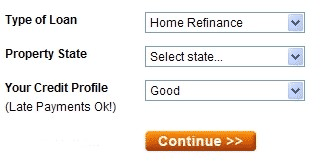PITI Payment – Glossary Term
PITI is calculated and used in every aspect of mortgage qualifying. Even if you pay your taxes and insurance on your own, PITI is the amount used for approval.
PITI Payment Definition
PITI is the acronym for a mortgage payment that includes Principal, Interest, Taxes, and Insurance. The lender collecting your PITI mortgage payment takes the principal and interest part (P&I) to repay your mortgage and puts the taxes and insurance part (T&I) into an escrow account.
That escrow account will have accumulated enough in it over a year to pay your property taxes and your homeowner’s insurance premium.
Do not confuse homeowner’s insurance with mortgage insurance. Mortgage insurance is separate from the PITI part and is for mortgages with less than 20% equity. Homeowner’s insurance is part of the PITI and is insurance if your house burns down or is damaged.
The taxes and insurance part of your mortgage payment does not go to the lender even though they collect it and hold it until it is due and payable.
For example, if your property taxes are $2500 for a year, then you pay $208.33 ($2500 divided by 12 months) a month. That is the (T) portion of PITI. The lender puts $208.33 into your escrow and at the end of the year you have $2500. That money is paid to your county for property taxes. The lender does not keep any part of that.
If you have a fixed rate mortgage, your P&I amount will not change. However, the T&I amount does change. Your property taxes go up or down when your property is reassessed. Your insurance premium can also change.
Be aware and start planning ahead when you find either of these are about to go up. Lenders are not always on top of escrows (taxes and insurance) so you may be going in the hole every month until they catch it.
If you have been going in the hole every month because the lender hasn’t caught the change, your escrow account will have a shortfall in it. If the lender asks for money to clean up a shortfall in your escrow account, the money is not going to them.
They realized your taxes or insurance increased and they need to replace the shortfall and then permanently increase your T&I amount so a shortfall is not created every month.
The best thing to do is pay attention to any property tax information or homeowner’s insurance changes sent to you. Don’t wait for the lender to change your taxes or insurance amount. Start sending in the correct T&I amount. Divide the tax amount or insurance premium amount by 12 and that is the new monthly T or I amount.
A PITI ratio is the total payment compared to your income. That is used for all parts of the qualifying and approval process. And like I said before, even if you pay your taxes and insurance on your own, all mortgage documents will have the PITI payment.
PITI reserves are required on some mortgages. This means a certain number of PITI payments determined by automated underwriting must be in a bank account or some other kind of asset for approval.
During a refinance, it appears you skip a mortgage payment and you do but you didn’t get it free.
Your PITI pays for the principal and interest of the previous month. March’s payment is paying for February’s principal and interest.
Let’s say you close the beginning of March on a refinance. You haven’t made your March payment. The payoff for your current mortgage includes all of February’s interest which would have been March’s payment. So there is one payment skipped.
Then, your closing costs which are rolled into your loan amount include the rest of March’s interest and you start with your first payment in May which pays April. So there is March and April skipped.
As you can see even when you skip PITI payments, you still pay for them. A bank or lender is never going to give you a free month.
Previous Post:« Home Equity Line of Credit – Glossary Term
Next Post:» Recording Fee – Glossary Term
Tags: Calculator • Payment • PITI • Ratio • Reserves


Leave a Reply